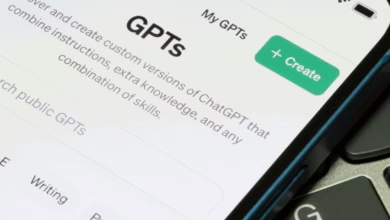AI-Powered ABM: How to Win Fortune 500 IT Deals

▼ Summary
– ABM is a strategic approach that focuses on selected high-value accounts rather than broad lead generation, using personalized, multi-channel programs for buying groups.
– It requires tight alignment between marketing, sales, and customer success teams who co-own account plans and share a unified view of target accounts.
– Selling to Fortune 500 IT involves complex, consensus-driven buying committees with 6-11 stakeholders across different functions like IT, finance, and security.
– AI-powered ABM automation addresses limitations of manual processes by enabling scalable personalization, timely outreach based on signals, and coordinated multi-channel campaigns.
– A successful ABM framework includes steps like gathering unified account intelligence, mapping the buying committee, orchestrating engagement, and using analytics to measure pipeline and revenue impact.
Securing major enterprise technology contracts requires a fundamentally different approach than traditional marketing methods. Account-based marketing represents this strategic shift, focusing intensive resources on a carefully selected group of high-value accounts rather than casting a wide net. For marketing and sales teams aiming to win over Fortune 500 IT decision-makers, this tailored strategy is not just beneficial, it’s essential. By aligning revenue teams around a unified account plan and executing coordinated, multi-channel engagement programs, businesses can significantly amplify their impact within these complex organizations.
Account-based marketing flips the conventional sales funnel on its head. Instead of generating a high volume of leads and hoping some qualify, ABM begins by identifying specific target accounts with a high propensity to buy. Marketing and sales then collaborate deeply, sharing a single view of the buying group to run personalized campaigns across various channels. This ensures that messaging is consistent and relevant to each stakeholder involved in the purchasing decision.
Understanding the Fortune 500 IT landscape is the critical first step. Enterprise technology purchasing is a consensus-driven process, often involving a committee of six to ten stakeholders from different functions like IT, finance, security, and procurement. Each member evaluates the proposed solution through a different lens: technical fit, risk, budget, and return on investment. A successful ABM strategy must speak directly to each of these unique personas with a cohesive narrative.
The structure of these buying committees is complex. Sales representatives often engage with a senior IT leader, such as a vice president or director, who must then justify the investment to their superiors, potentially including the CIO or CTO. Simultaneously, the strategy must provide value for other influencers, like enterprise architects assessing technical compatibility or individual contributors focused on usability. Legal and procurement teams, operating outside of IT, also hold significant sway. Recognizing this intricate web of influence is paramount.
Purchase decisions are frequently triggered by specific organizational events. Leadership changes, urgent market trends, and major transformation initiatives can create immediate opportunities. A new CIO often arrives with a mandate for change, while crises like security breaches or system failures can accelerate a normally slow buying process. Furthermore, annual budget cycles and strategic projects like digital transformations make companies more receptive to new solutions at certain times of the year.
While the principles of ABM are powerful, manual execution hits inevitable limits. The sheer volume of data to analyze, the demand for personalized content, and the complexity of coordinating multi-channel sequences become unsustainable without automation. Teams relying on spreadsheets and one-off efforts struggle with data silos, inconsistent messaging, and missed timing opportunities. This is where AI-powered orchestration creates a decisive advantage.
AI-enabled ABM tools transform this challenging process. They deliver 1:1 contextual messaging at scale by matching content to a stakeholder’s role, industry, and live intent data. Instead of static campaigns, these systems trigger dynamic, multi-channel sequences based on specific behaviors. For instance, a CTO reviewing integration content might automatically receive an invitation to a technical deep-dive session. This ensures timely outreach driven by real-time signals, such as a surge in intent data or the hiring of a new key executive.
The core advantage of automation is the combination of scalability, speed, and consistency. Teams can quickly build personalized experiences for multiple accounts without sacrificing quality. A unified customer data platform aggregates firmographic, technographic, and intent data into a single source of truth, providing a complete view of each account. An AI-powered orchestration engine then uses this intelligence to score accounts, map buying committees, and determine the optimal channel and content for each stakeholder.
Implementing a winning ABM framework involves a clear, five-step process:
- Gather unified account intelligence to create a single profile for each target.
- Map the entire buying committee, identifying decision-makers, champions, budget holders, and influencers.
- Orchestrate multi-channel engagement with coordinated sequences across marketing and sales.
- Deliver personalized content tailored to the specific needs of each role.
- Establish unified analytics to track engagement, pipeline progression, and revenue influence.
For teams using platforms like HubSpot, automation is built-in. The ABM tools help identify and tier target accounts based on fit and intent, automatically tag contacts with buying roles, and trigger personalized workflows. The reporting dashboard provides a clear view of account engagement and directly attributes marketing efforts to pipeline and revenue.
To ensure long-term success, marketers should adopt several key practices. Treat ABM as a comprehensive business strategy, not a single marketing campaign. Prioritize data quality above all else, as clean data is the foundation of effective AI. Use modular content creation, standardizing 80% of messaging and using AI to personalize the remaining 20%. Most importantly, focus on orchestrating engagement across the entire buying committee, not just individual contacts. Measuring success through engagement metrics, pipeline velocity, and influenced revenue will clearly demonstrate the powerful return on investment that a sophisticated ABM program delivers.
(Source: Hubspot)





